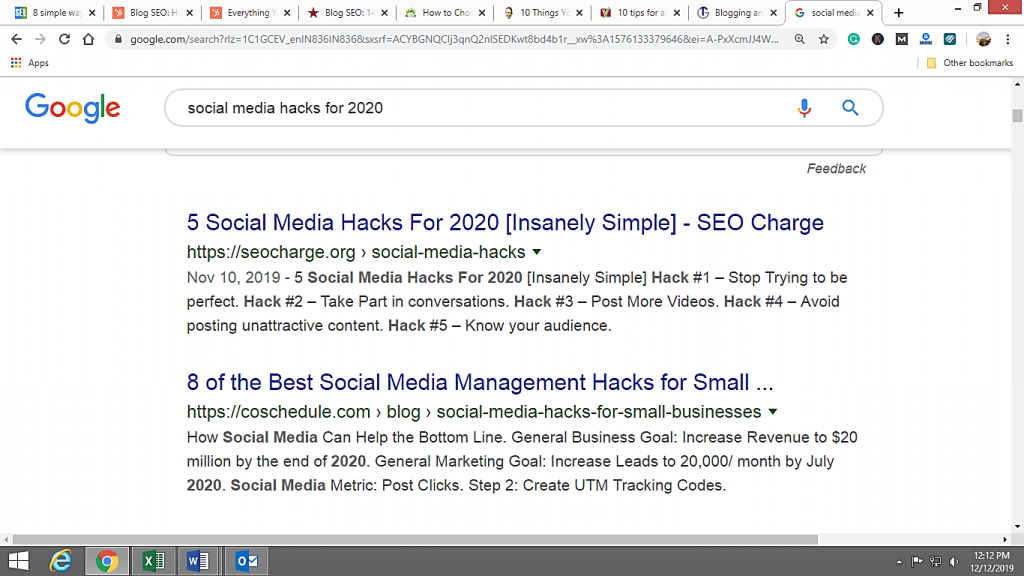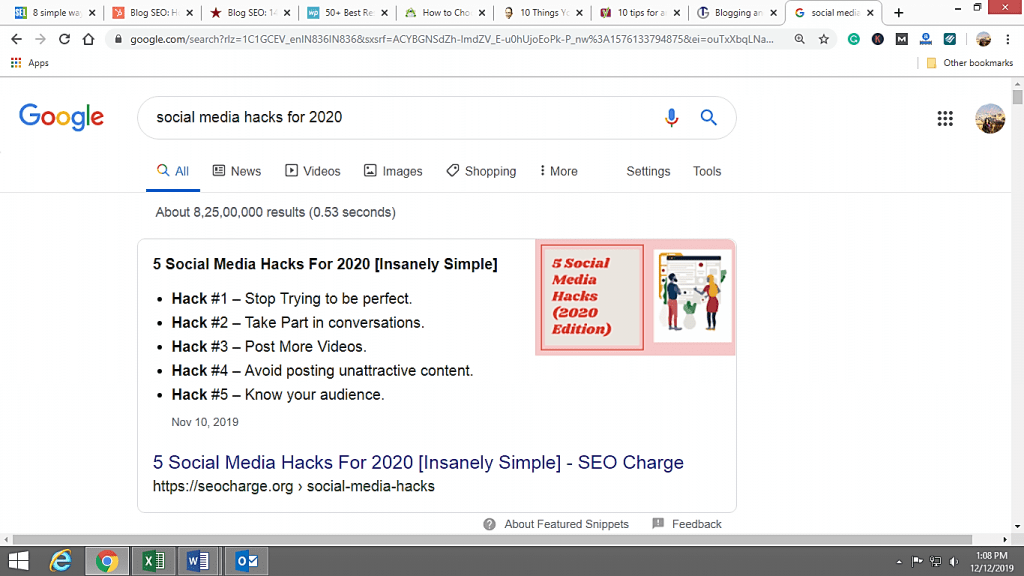As more people are switching to Google to get their queries answered, brands are ruthlessly competing to appear in the top search results. One of the easiest ways of accomplishing this is blogging.
While blogging may not be a ranking factor in itself, it can boost your search engine ranking tremendously. If you run a blog that’s regularly updated with posts that’s high-quality and relevant to your target users, it can make a lot of difference to your web traffic.
In this blog, we share some proven ways to use blogging to improve SEO in 2020.
1. Focus on the Right Keywords
Keywords act as the foundation of your search engine optimization process. So, these have to be sorted out even before you start writing your blog. By choosing the right keywords, you can make search engines understand what your blog is all about. As a result, the chances of your articles popping up in response to a search improve manifold.
Here are some tips to get your keywords right:
Focus on Long-tailed Keywords: Long-tailed keywords are three or higher word phrases that are very specific to whatever you’re selling. With long-tailed keywords, the competition is low and your target audience understands their needs better, so it’s easier for them to find you.
For example, if someone searches for ‘travel Australia’, he may not be very sure about what he’s looking for. On the contrary, if someone is looking for ‘how to travel to Australia in winters’, the user apparently knows what he’s looking for. In such cases, it’s easier to connect with the target audience easily.
Keep User Intent in Mind: With Google algorithms getting smarter with each day, it’s essential to keep user intent in mind while framing your posts. This essentially means incorporating not just the target 1-2 keywords but also related keywords that the user may expect to find when going through your posts.
Avoid Keyword Stuffing: When it comes to incorporating keywords, you may be tempted to use a lot of keywords in your blog posts. Using too many keywords in your posts can actually do you more harm than good. Google considers this practice as keyword stuffing, so this can bring down your website’s ranking instead of boosting it. Also, keep just 1-2 target keywords per blog post.
2. Make your Blog Mobile-Friendly
With breakthroughs happening in technology every now and then, mobile devices have proliferated. These days more people search from their mobile devices than desktops. In all mobile-based searches, search engines favor sites that are mobile-friendly.
Besides, blogs that are mobile-responsive can have just one URL instead of two-one for mobile and another for desktop. So, any inbound links coming to your blog will not be divided between two separate URLs. This will strengthen your SEO authority gained through all such links.
Note: If your blog is built on WordPress, you can use responsive WordPress themes to keep your blog mobile-friendly.
3. Incorporate Keywords at the Right Places
Once you have figured out what your target keywords are, the next thing is to know how to incorporate them into your post. Here are some places where you must include your keyword:
Title Tag and Meta Description: Your blog headlines helps your target audience decide how relevant your blog is for them. So, it’s recommended to use keywords in the title of your post (called a title tag in Google search results).
It’s equally essential to keep these keywords in the first 55 characters of your title. This is because the Google search engine results page displays only around 55 characters of any title tag.
Equally important is the meta description. Meta descriptions are nothing but snippets of text that appear below the title tag in the search engine results page (SERP).
While meta descriptions aren’t an official ranking factor, they can be tweaked to entice users to click through your link. Try to confine your descriptions to 155 characters or less because that’s how much is visible in the search engine results page.
Body: Keep your keywords scattered throughout the body of your post including the headers. The keywords should be incorporated in your post in a natural manner that doesn’t annoy your readers. Overstuffing your keywords may not only jeopardize your ranking but also turn away your readers.
URL: The URL of your blog tells the search engine what your post is all about, hence optimizing the URL of each of your blogposts is vital. Be sure to include at least one target keyword in your URLs.
Below, we have given one example where the user’s query for ‘social media hacks for 2020’ returned this as one of the top results:

The content has rightfully placed the keywords ‘social media hacks’ in the title tag, URL and meta description of the blog post.
Read : Everything You Need to Know About Writing Meta Descriptions
4. Optimize for Images
Images not only contribute to the aesthetics of your blog but also help it rank better. While search engines like Google may not be able to see images, they can read the alt text of each image to understand what the image is all about. So, optimizing images by providing appropriate alt text helps.
With platforms such as WordPress, it has become easy to create alt text for your images. While writing alt text, it’s essential to write descriptions that are accurate and have at least keyword that’s related to your post.
5. Optimize for Featured Snippets
Featured snippets are nothing but a format that provides users with concise, direct answers to their queries. These can be in the form of a paragraph, list or table.
With featured snippets, you have a chance to appear on the very first position in Google search results and gain more visibility among prospects. With more and more people seeking specific answers to their long-tailed queries on Google, optimizing your content for featured snippets makes perfect sense.
To optimize for snippets, you can frame your blog posts in a question-answer format. You can ask questions in your headings and immediately follow the question with a concise answer-not of more than 97 words.
You can elaborate on your answer further in the article if required. Of course, you need to be in the top 10 search results to stand a chance of your snippets appearing on the very first spot.
Read: How to Optimize for Google’s Featured Snippets to Build More Traffic
Here’s a featured snippet for the query ‘social media hacks for 2020’:

6. Improve Internal Linking
While linking to external high-authority websites is a good practice, linking to other webpages on your own blog is equally important.
Such a practice not only provides users with more relevant content from your blog but also signals the search engine that you are an authority on the subject.
So, if you mention a topic you have discussed in detail in another post, provide relevant links. You can also add links for suggested reading on related topics.
7. Improve Page Load Speed
Now that Google considers page load speed as a key ranking factor, it’s essential that you optimize your blog for page speed. Higher page speed is also important to create a seamless experience for your users.
To improve speed, go to Google Pagespeed Insights and enter your URL. Here, Google will present some suggestions that you can implement to make your site faster. If you are using a blog built on WordPress, install a caching plugin to improve your speed.
8. Update Blog regularly and Remove Thin Content
In order to make search engines index and rank your blog, updating your blog regularly is vital. While no one can deny the importance of publishing new content from time to time, editing and repurposing the existing content is equally important.
A new piece of content may take some time to get indexed and ranked, whereas an updated piece of content gets ranked fairly quickly. Also, it takes fewer resources to modify existing content.
In addition to this, remove thin, low-quality content that draws little traffic and doesn’t contribute to your ranking in any manner. An alternate solution is to club up smaller posts on one topic into a large comprehensive post.
Conclusion
While all these tips will stand you in good stead, it will take some time for them to deliver results. A well-optimized blog can go a long way in dictating the long-term success of your brand.

